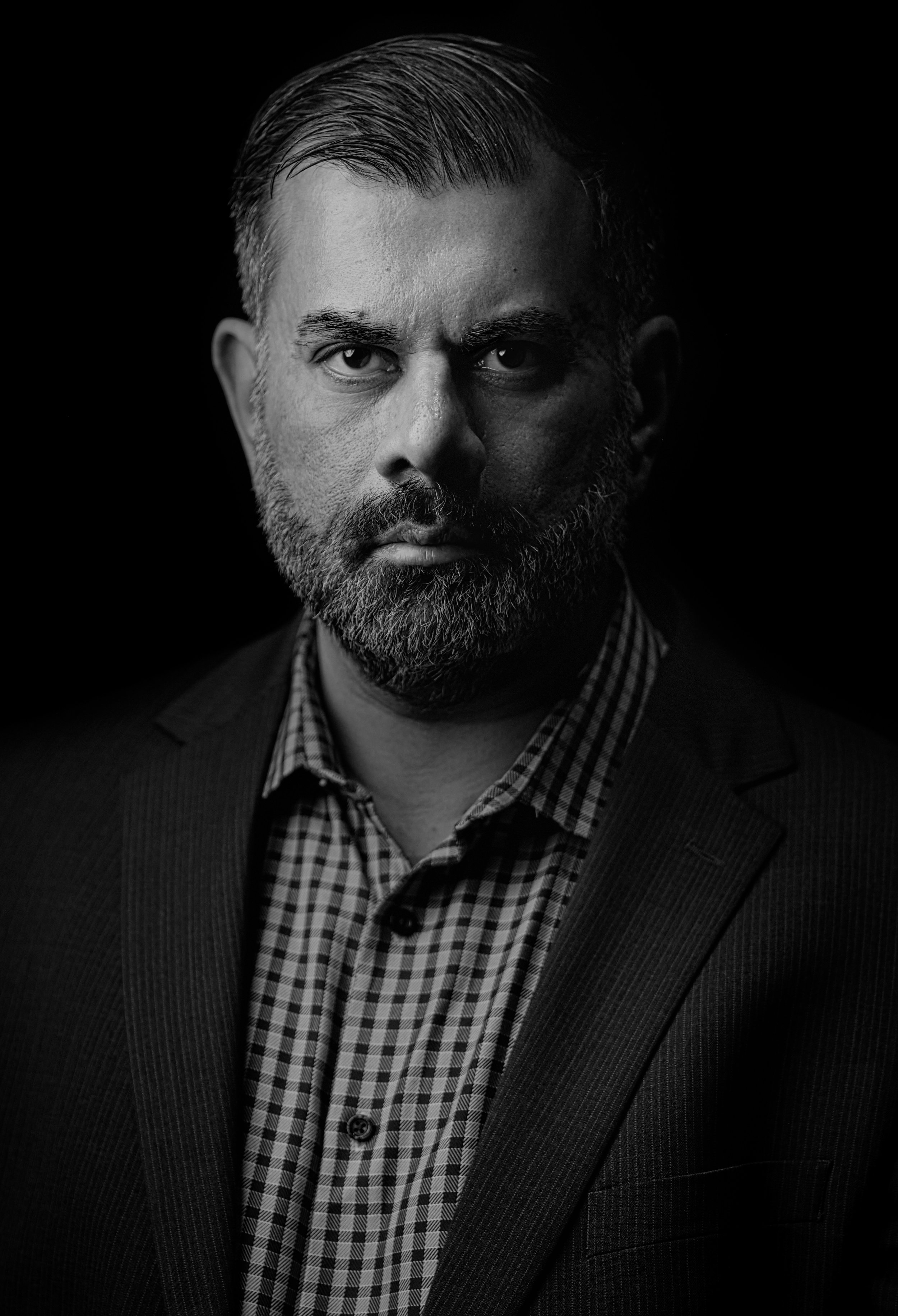Studio Lighting and Mood
Small changes in studio lighting can dramatically change the mood of a portrait.
I recently had the pleasure of working with author Dr. Tahir Rahman, Associate Professor of Psychiatry at Washington University in St. Louis.
Clamshell Lighting for Commercial Portraiture
Oxford University Press needed an approachable, commercial looking headshot to promote Dr. Rahman’s newest book.
We used a clamshell setup with a soft key light source above the subject’s face (the top part of the “clamshell”), and a broadly curved reflector for the lower part of the shell.
The key light above provides flattering wrap-around light, while the bottom fills in the shadows and smooths out the skin. I often find that adding a hair light opposite the key light adds depth and provides subtle background separation:
Commercial Portrait with Clamshell Lighting (Angler 48 inch BoomBox + Westcott Eyelighter + Gridded Hair Light)
Single Light Dramatic Portrait
By removing the reflector and hair light, we are left with just the key light. Moving the key light to one side of the subject’s face creates a classic Rembrandt lighting setup with deep shadows cast on the other side of the face. Removing a few light modifiers and changing the placement of our key light creates a profoundly different mood:
Single Light Dramatic Portrait (Angler 48 Octobox, feathered)
Post-Production
Lighting is paramount to controlling the mood of a portrait, but we can go one step further with editing and retouching in Photoshop. Black and White conversion, exposure reduction, contrast rebalancing, and detail enhancing all work together to add a sense of mystery and deepen the drama of the portrait:
Black and White Edit, Adobe Photoshop




